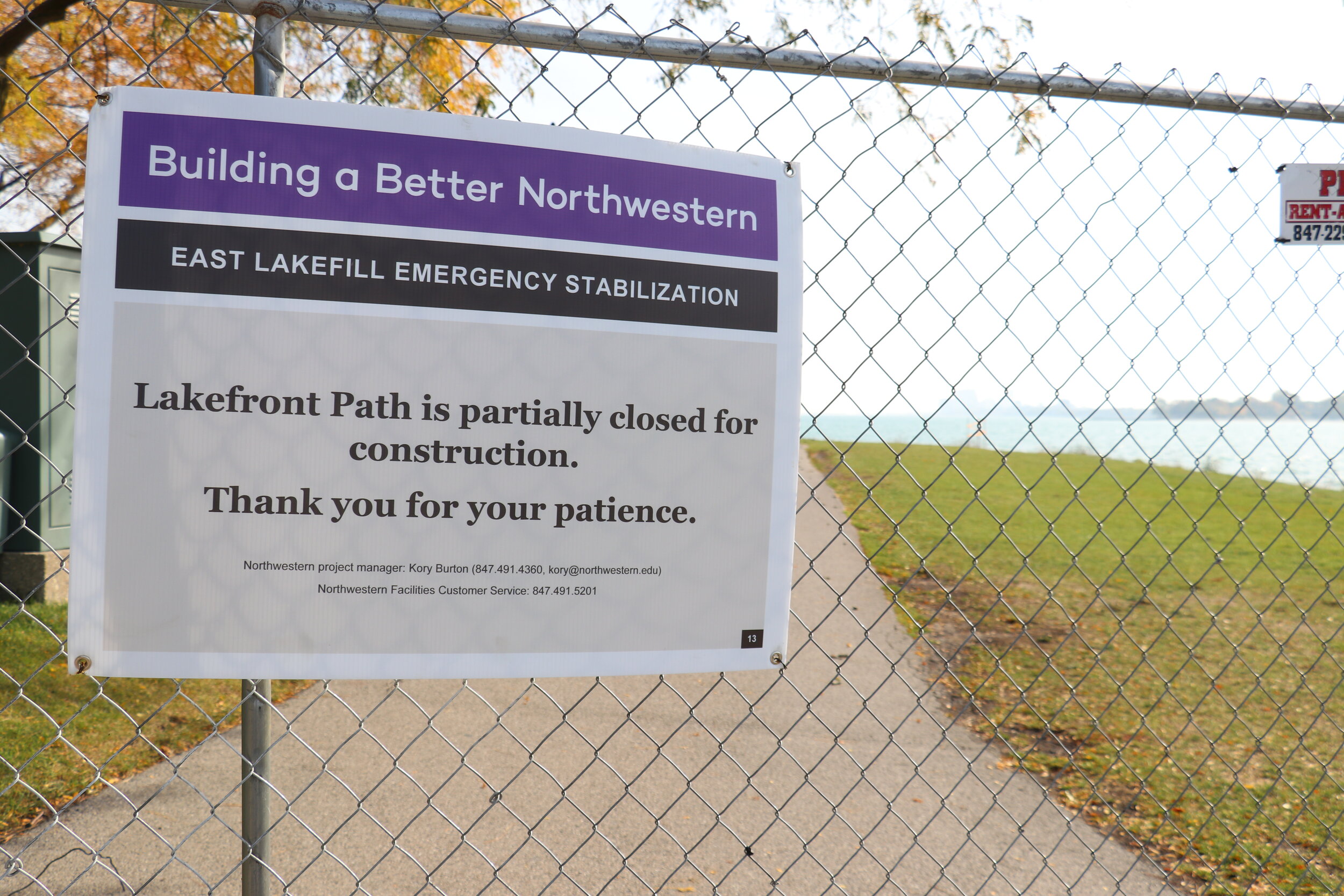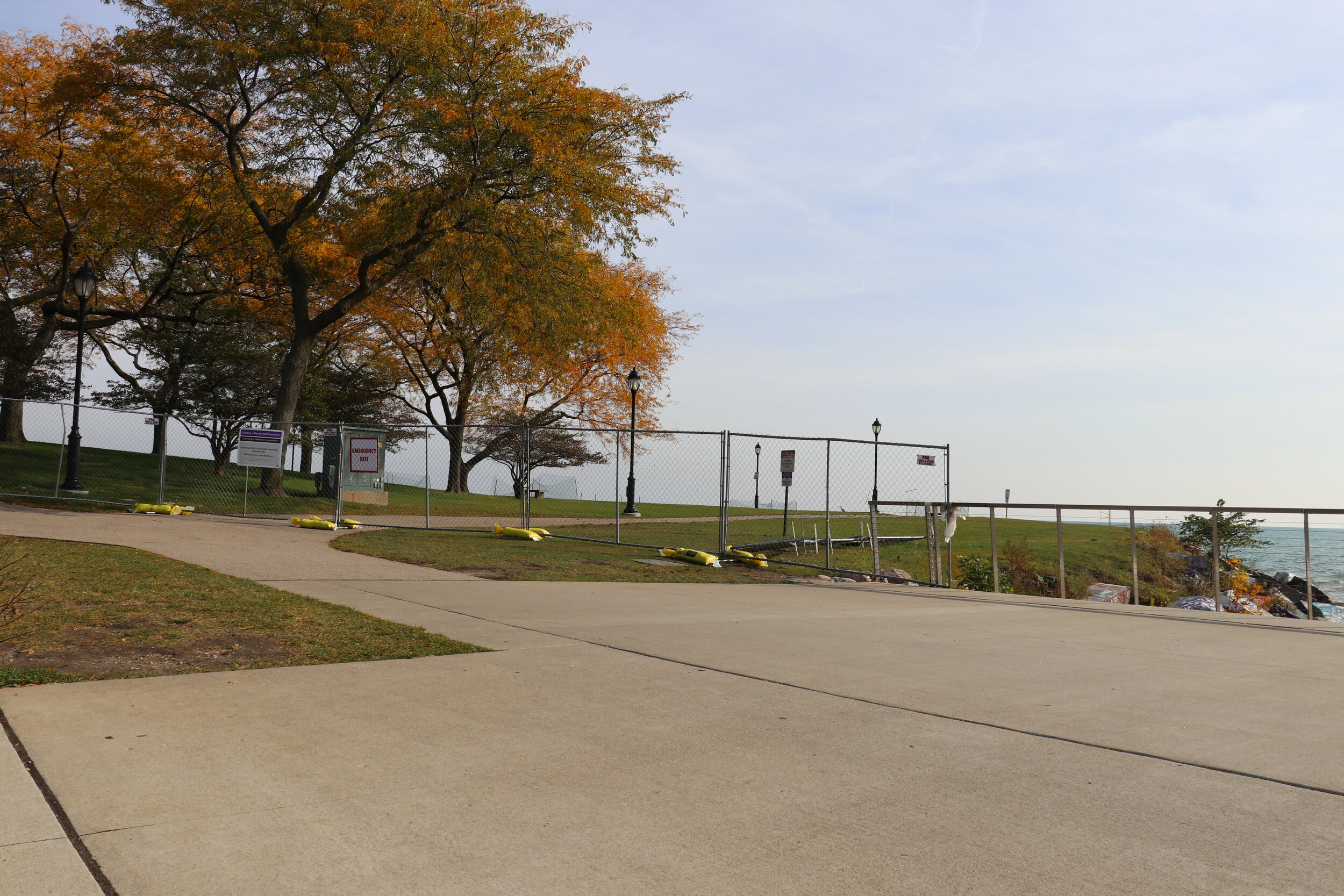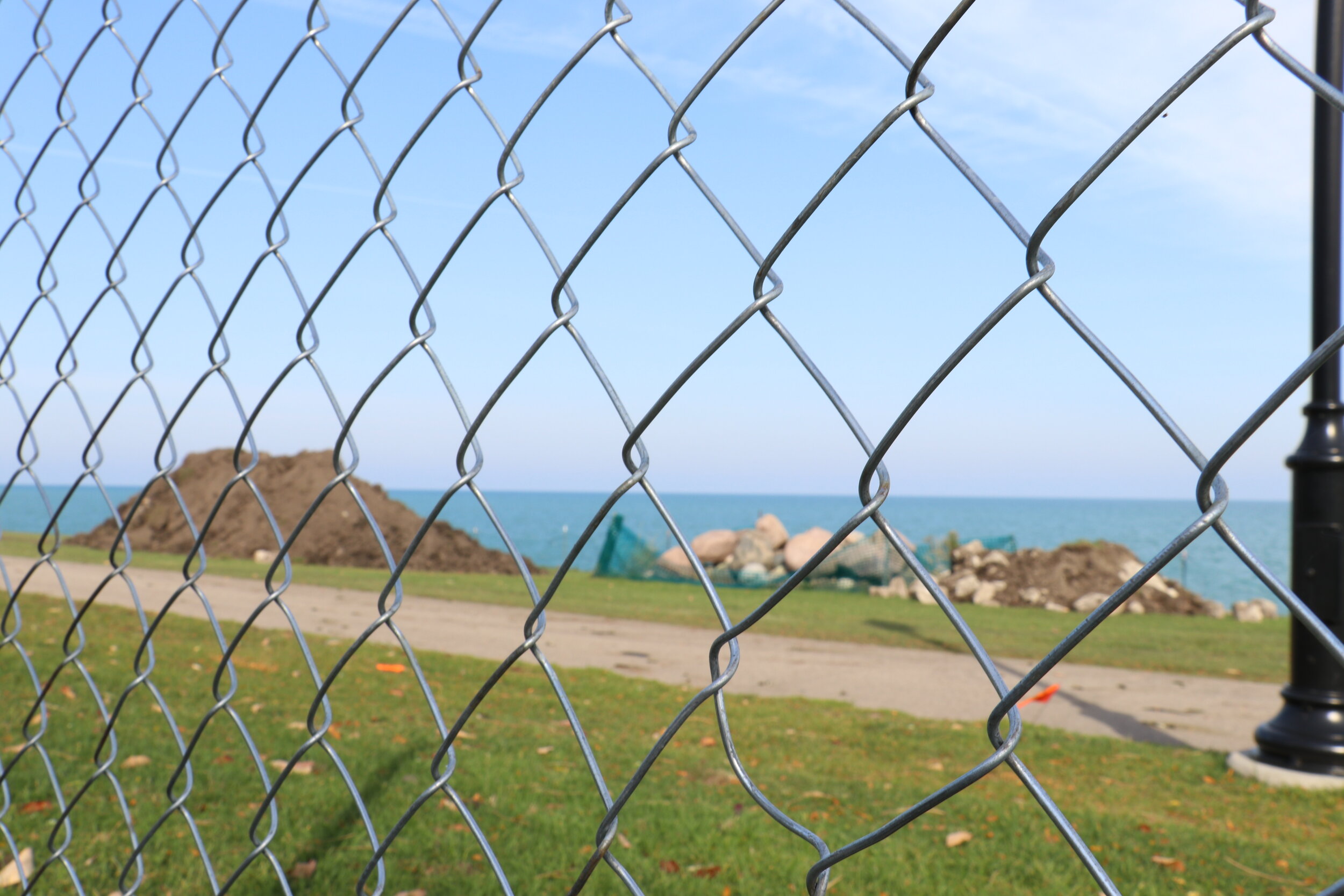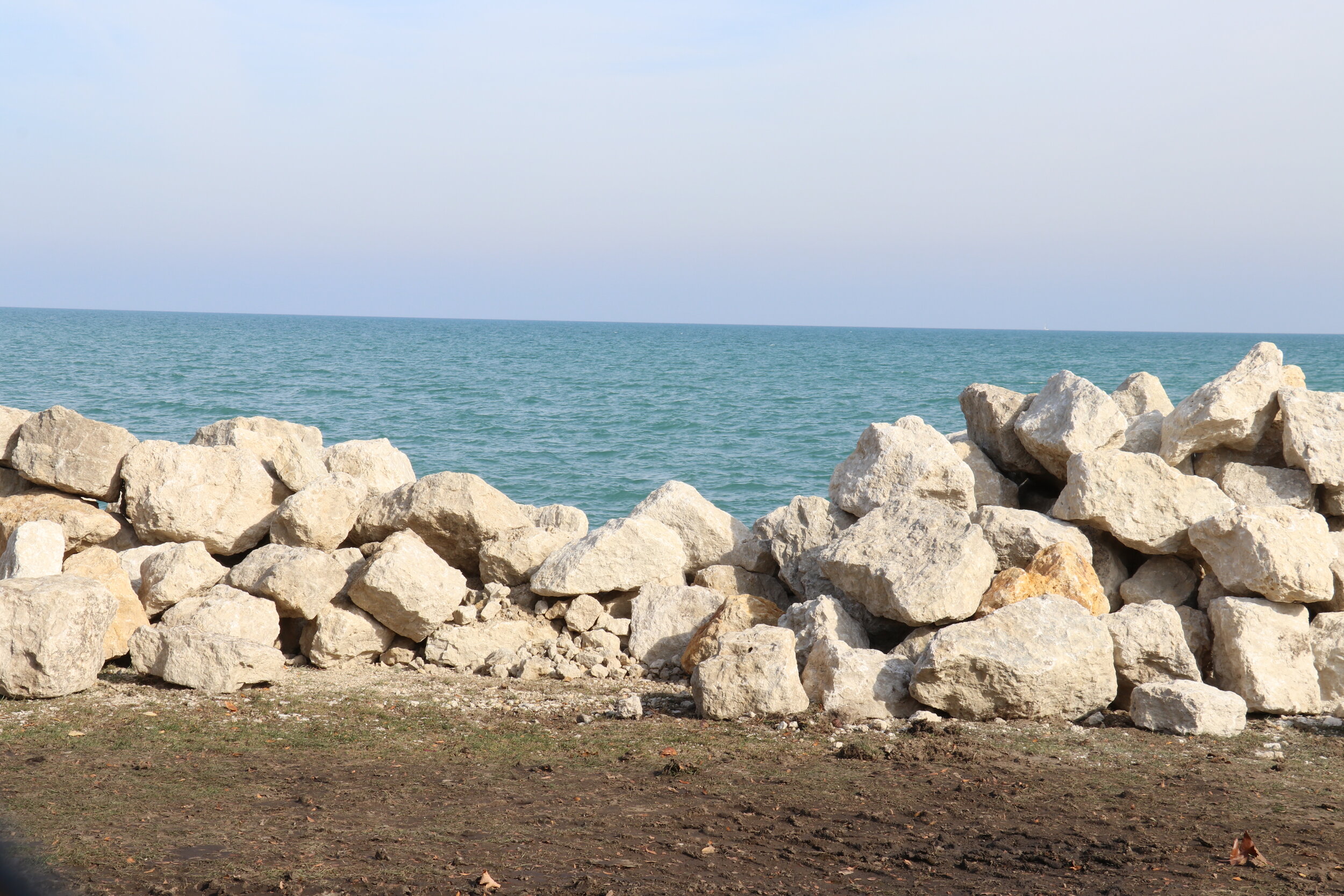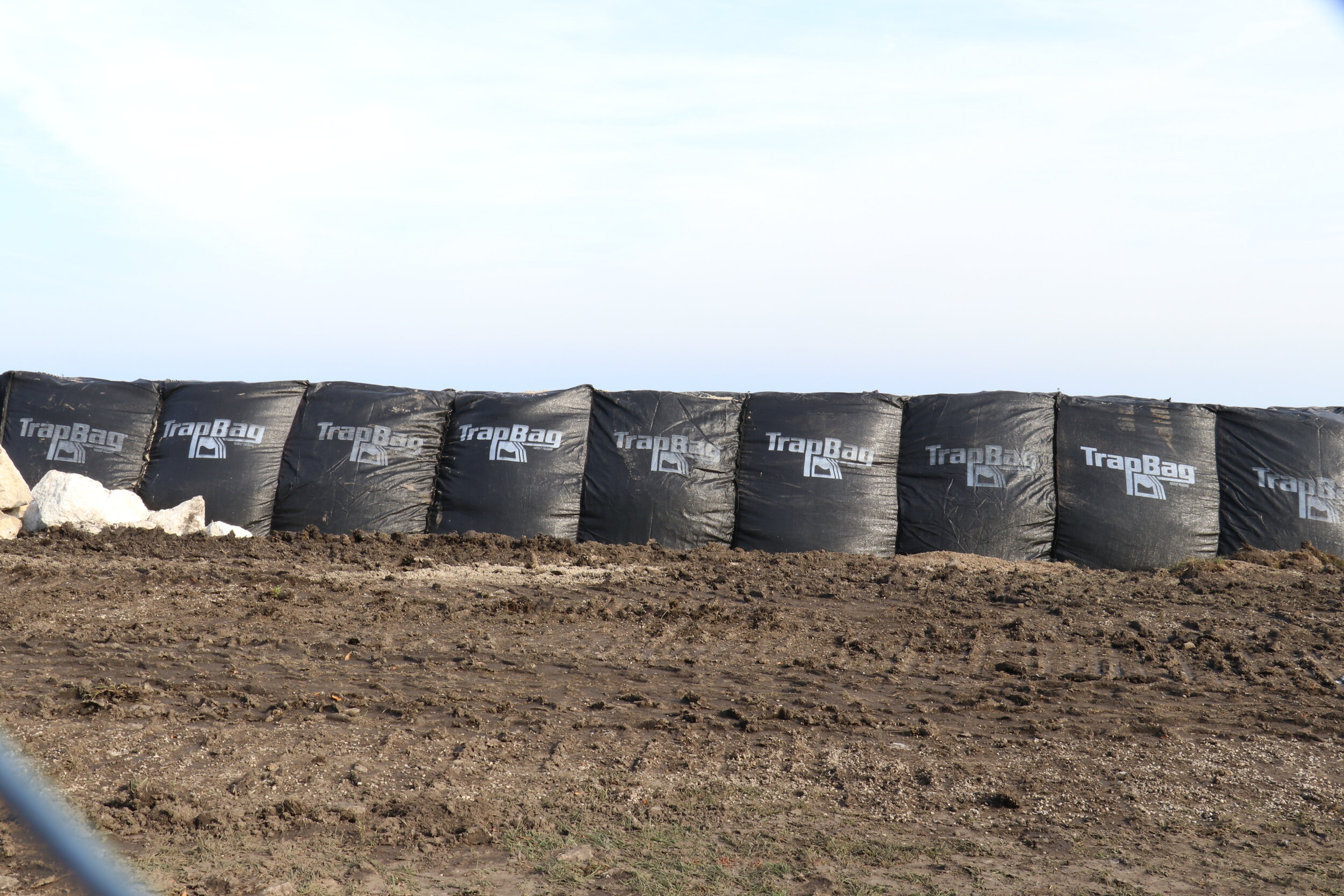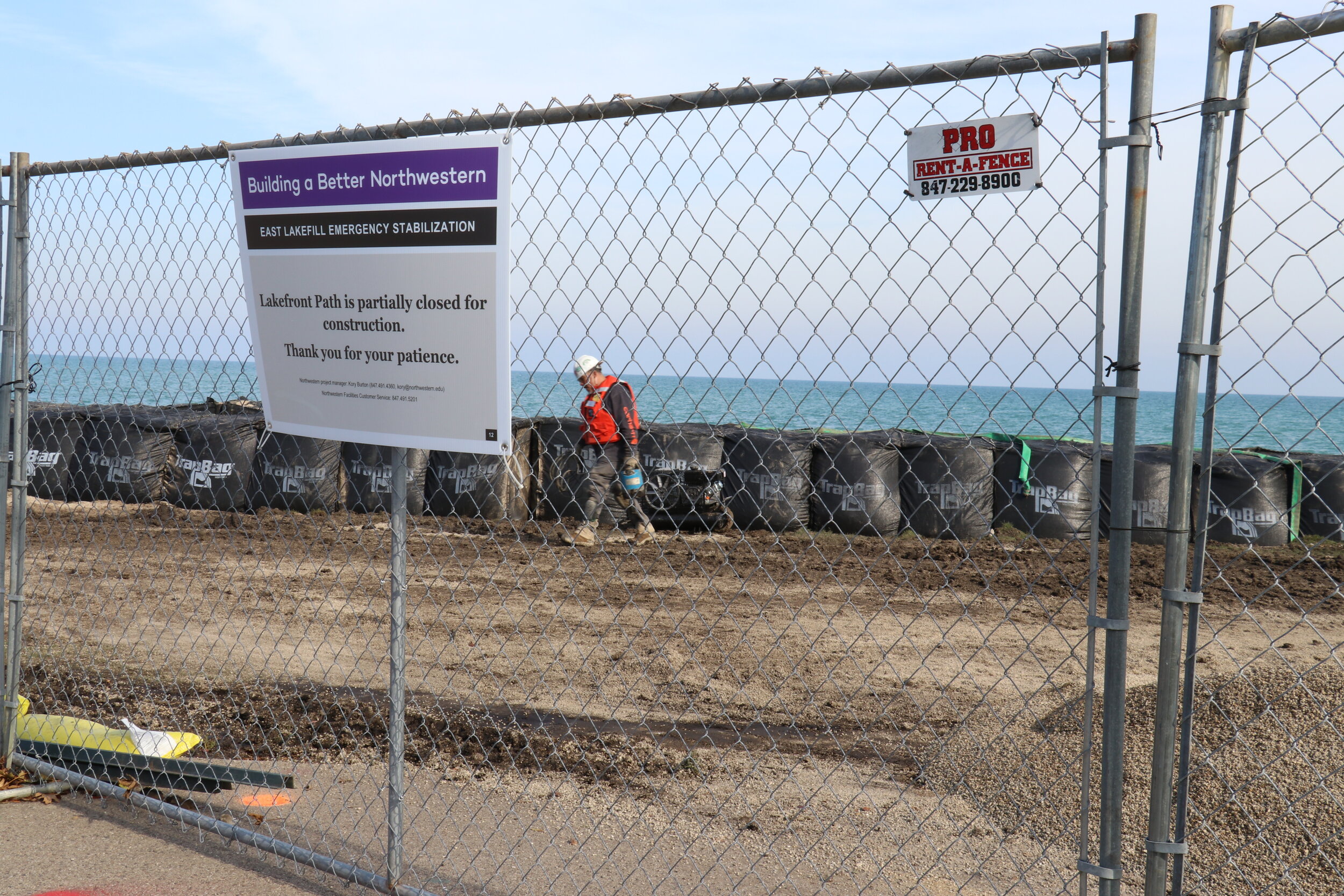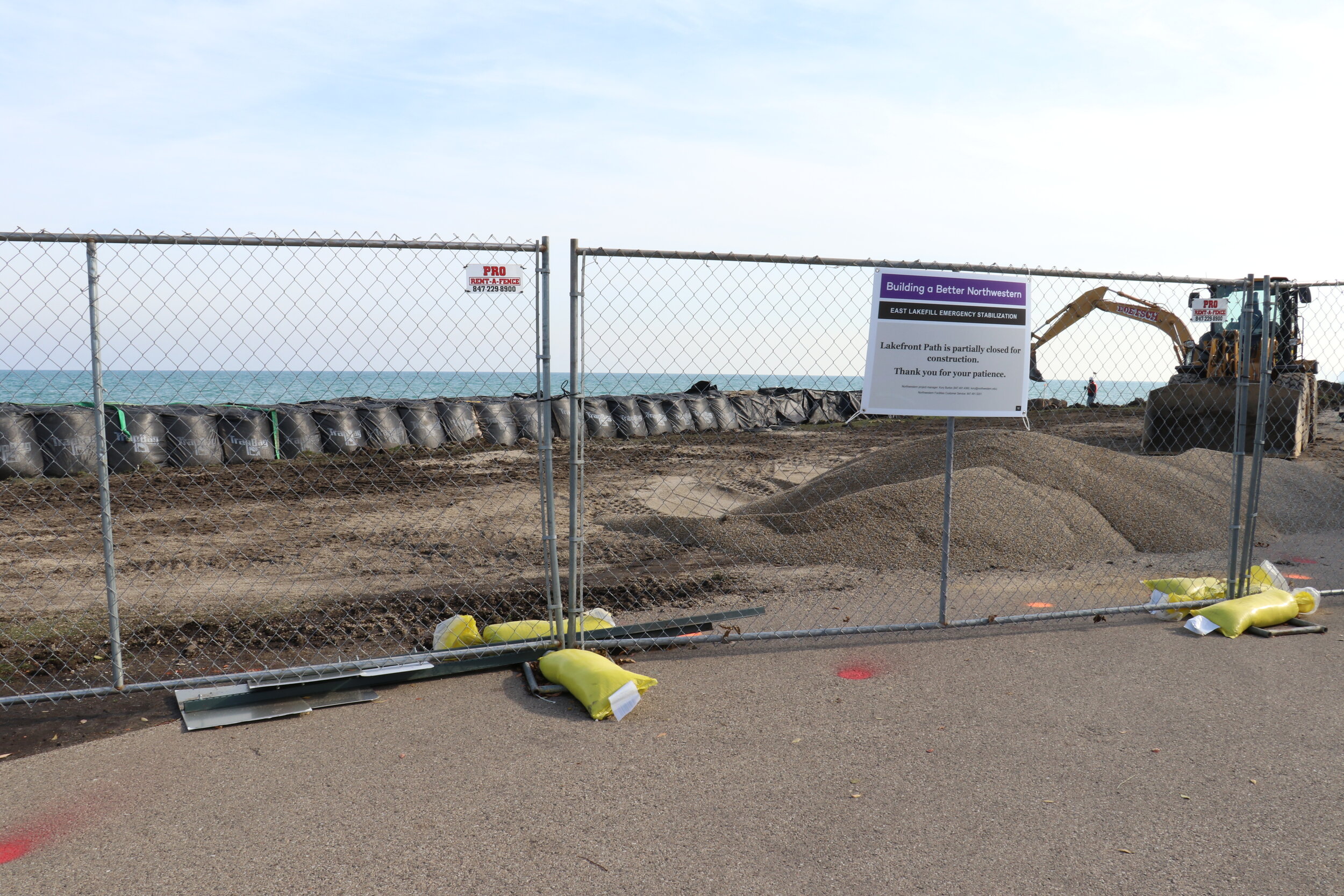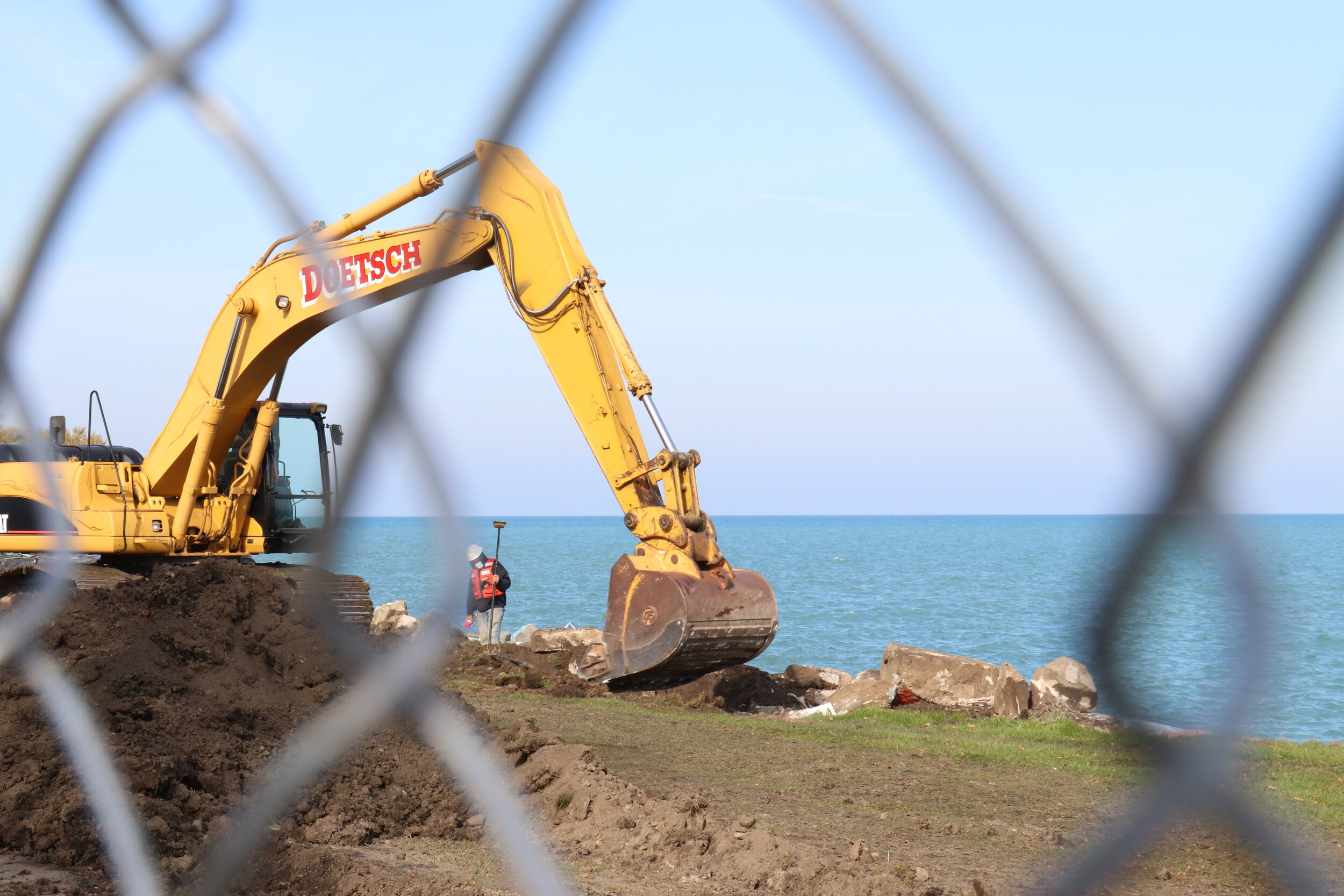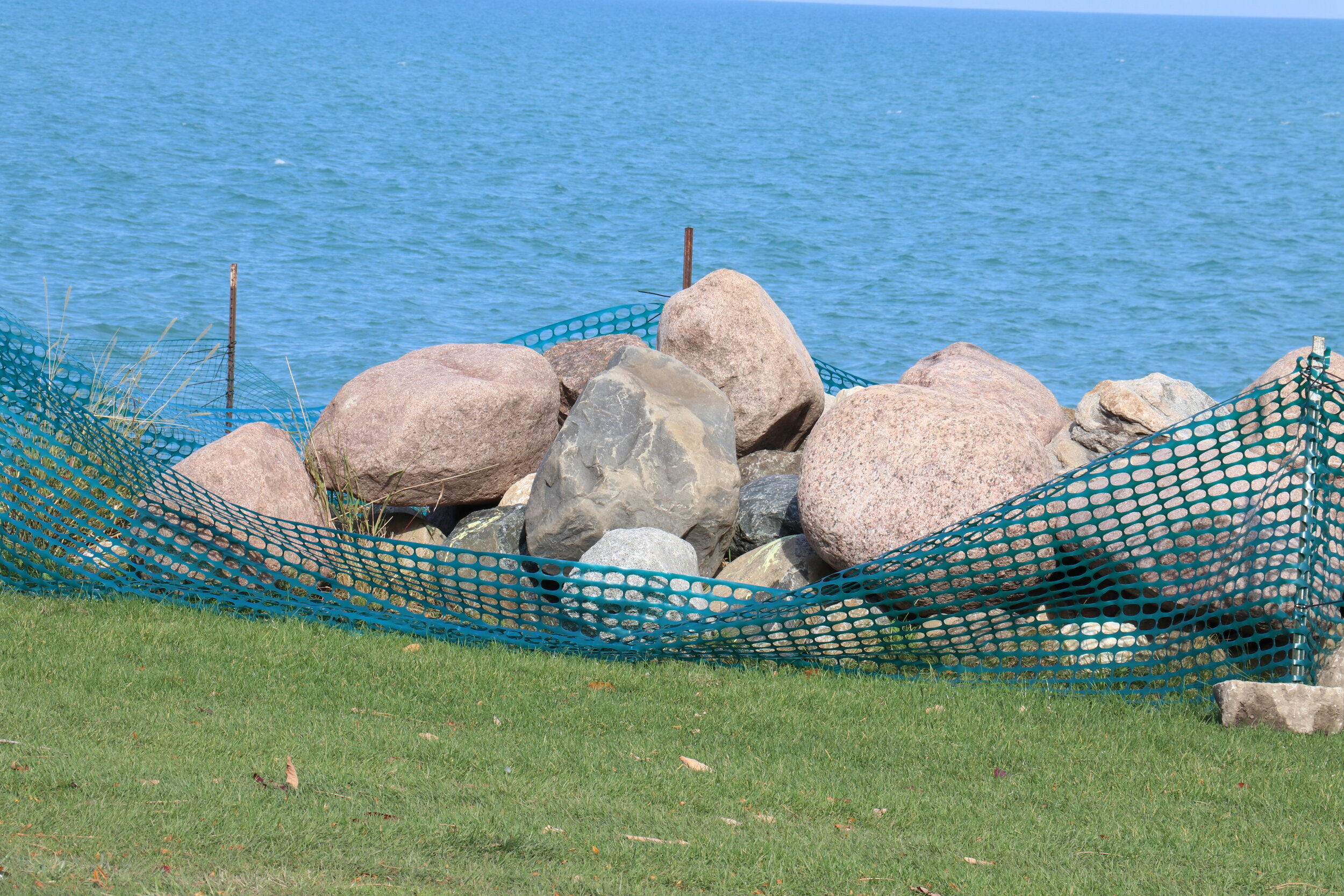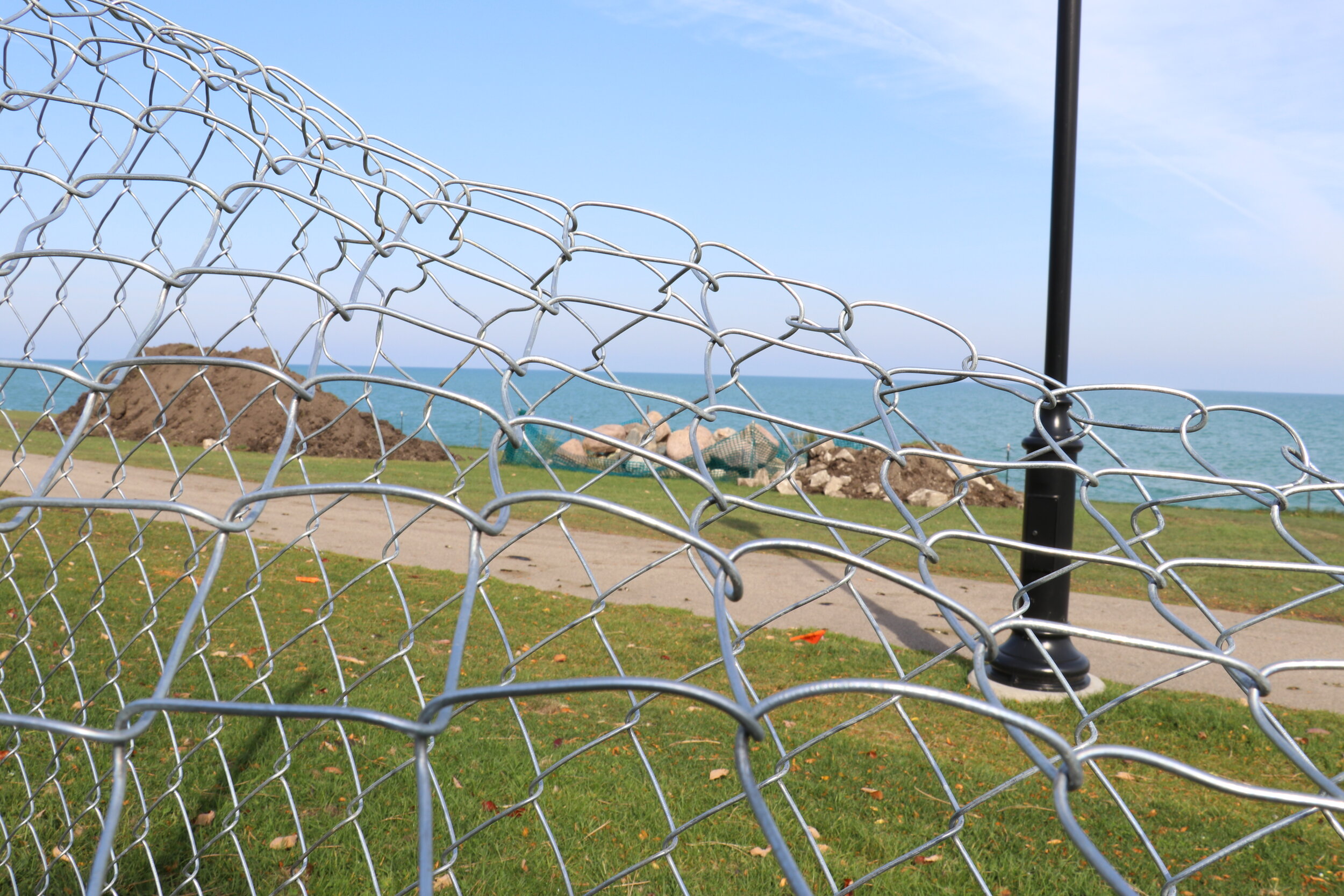Northwestern Begins the East Lakefill Emergency Stabilization Project
Photos by Kyra Steck. Click to move through gallery.
The Lakefill has been a staple of Northwestern University’s Evanston campus for over five decades. With stunning views of Lake Michigan, a firepit and trees strong enough to hold up a hammock, it offers students a rare opportunity to reconnect with nature and enjoy the outdoors. As Lake Michigan’s water levels continue to rise to historic heights, however, erosion and weathering threaten the Lakefill’s stability.
The Problem:
As a result of increased precipitation, milder winters and warmer temperatures, Lake Michigan’s water levels are rising more every year. According to data collected by the US Army Corps of Engineers, lake levels have remained above the historic average of 578.86 feet every month since June of 2014 and are trending upward. In fact, September was the first month of 2020 in which Lake Michigan’s water levels did not surpass previous record highs.
“Obviously lake levels fluctuate, but we’re seeing significant rises within the past year alone,” said Greg Kozak, the Director of Sustainability at Northwestern. “We have a few areas that are pretty interesting and profound in terms of what we’re currently seeing versus what we saw maybe a couple years ago.”
Higher lake levels have increased the frequency and intensity of Lakefill erosion, said Bonnie Humphrey, the Director of Design and Facilities Management. An armor stone revetment, seen as the stone wall covered in years of paint from previous students, protects the Lakefill. According to Humphrey, over the last 50 years, this revetment has shifted. While the process would have occurred over time regardless of climate change, it has been aggravated by increased lake levels and significant wave action. When the rocks shift, they move further out into the water and open up more joints between them, causing erosion at the base of the larger stones and making the barrier to the Lakefill more permeable.
Even more concerning, due to increased lake levels and wave activity, waves overtop the existing armor stone revetment during intense storms and settle on the grassy area of the Lakefill. This causes erosion behind the revetment and washes out the topsoil.
“The waves were never crashing over the amor stone in the past,” said David Stone, the Director for Construction for Northwestern Capital Programs. “Now they seem to be above the armor stone whenever there’s a heavy storm.”
As a result of these weathering conditions, the Lakefill lost a significant amount of soil behind the armor stone, said Stone.
The Short-term Mitigation:
In late September, Northwestern closed the eastern path of the Lakefill for the East Lakefill Emergency Stabilization Project. The construction is a maintenance project meant to stop soil erosion in the immediate future.
“The work that’s underway is really temporary work to protect ourselves so we have a lakeshore to talk about,” said Stone.
To protect the Lakefill from weathering, Northwestern is installing TrapBags®, large sandbags that serve as a makeshift barrier. TrapBags® are an eco-friendly solution made from clean material that has no potential to pollute the lake, Humphrey said.
In order to install the TrapBags®, Humphrey’s team had to create flat ground by scraping the top of the Lakefill for miscellaneous rocks. Next, her team will lodge the long line of connected TrapBags® behind the revetment and above the armor stone. When waves hit, they will absorb the wave energy and prevent overtopping and further erosion.
Humphrey expects Northwestern will finish the project by December. When completed, topsoil and tall grass will be planted over the TrapBags® and they will not be visible from above ground.
The East Lakefill Emergency Stabilization Project remains a temporary fix. The installation of TrapBags® is at least a three to five year solution, said Stone, and will be inspected annually for any repairs that need to be made.
The Long-term Solution:
Stone and Kozak are currently in the process of hearing proposals from potential consultants for a more permanent fix. The two are looking for opportunities to restore the riparian edge of the waterline and improve the area for flora and fauna, said Stone. They are also considering the potential to capture energy from wave and wind action.
“We’re in the very initial stages of those discussions with engineers,” Humphrey said. “We’ve begun those discussions, but we need to study it further.”
SOURCES:

